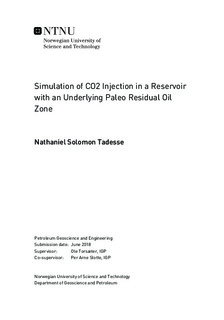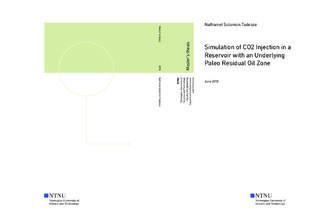| dc.description.abstract | Paleo residual oil zones (PROZs) are zones below the oil-water contact (OWC) that
contain residual oil. These types of zones exist in many fields around the world, but is
often given little attention, due to traditionally being considered unproducible. A
modern enhanced oil recovery (EOR) technique that has showed promising results in
PROZs is CO2 injection. Still, companies typically are reluctant to commence CO2 EOR
projects because of the large upfront costs and uncertainty related to how the project
will develop. Unforeseen heterogeneities may for example reduce the degree of mixing
of CO2 and oil, even under miscible conditions. It may also lead to unexpected
residual oil saturation after injection of CO2, in parts of the reservoir. Thus, it is
important to evaluate effect of CO2 injection start and CO2 injection rate. Those
parameters influence necessary infrastructure capacity and design. Evaluation of
Todd-Longstaff mixing parameter and residual oil saturation to miscible CO2 injection
is also of interest. These are two uncertain parameters that may be dependent on
heterogeneities within the reservoir.
In this thesis, sensitivity analysis of CO2 injection start, CO2 injection rate,
Todd-Longstaff mixing parameter, and residual oil saturation after injection of CO2 is
presented. General trends were noticed; 1. more oil was produced sooner with
increased CO2 injection rate. 2. It seemed beneficial to start CO2 injection immediately
after oil production rate, during waterflooding, had stabilized at a low value. 3.
Todd-Longstaff mixing parameter and residual oil saturation after CO2 injection
impacts effectiveness of CO2 EOR significantly. Substantial amounts of oil was
produced from the PROZ and main pay zone (MPZ) in many of the cases ran, when
CO2 was injected, compared to when water was injected throughout. However, most of
the extra oil produced came from the MPZ. That will often be the case in field projects
as well, and typically it is essential that the MPZ can benefit from CO2 injection, if CO2
EOR projects are to be commenced in the PROZ. Furthermore, qualitative comments
were provided about economics regarding results of the sensitivity analysis. | |

